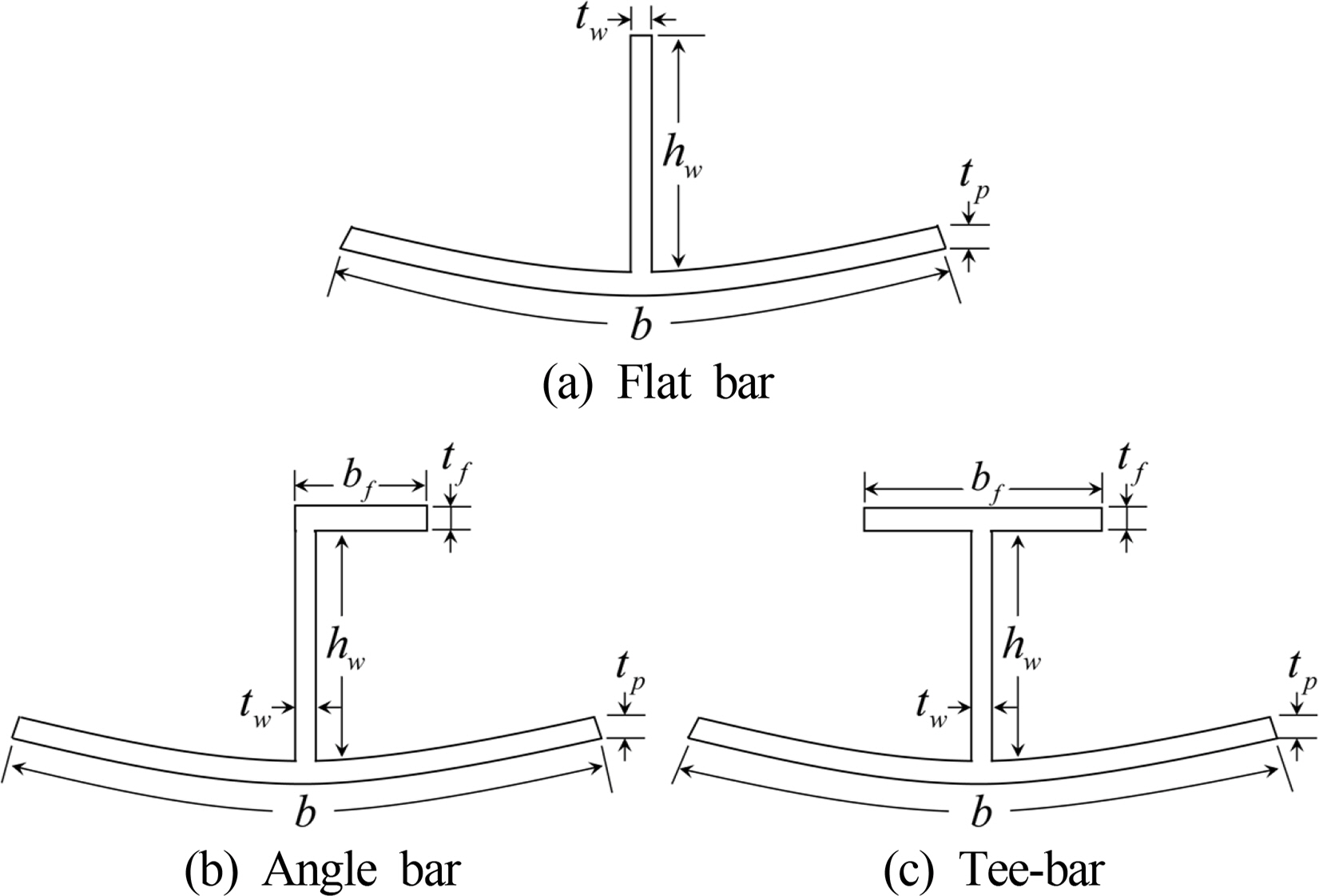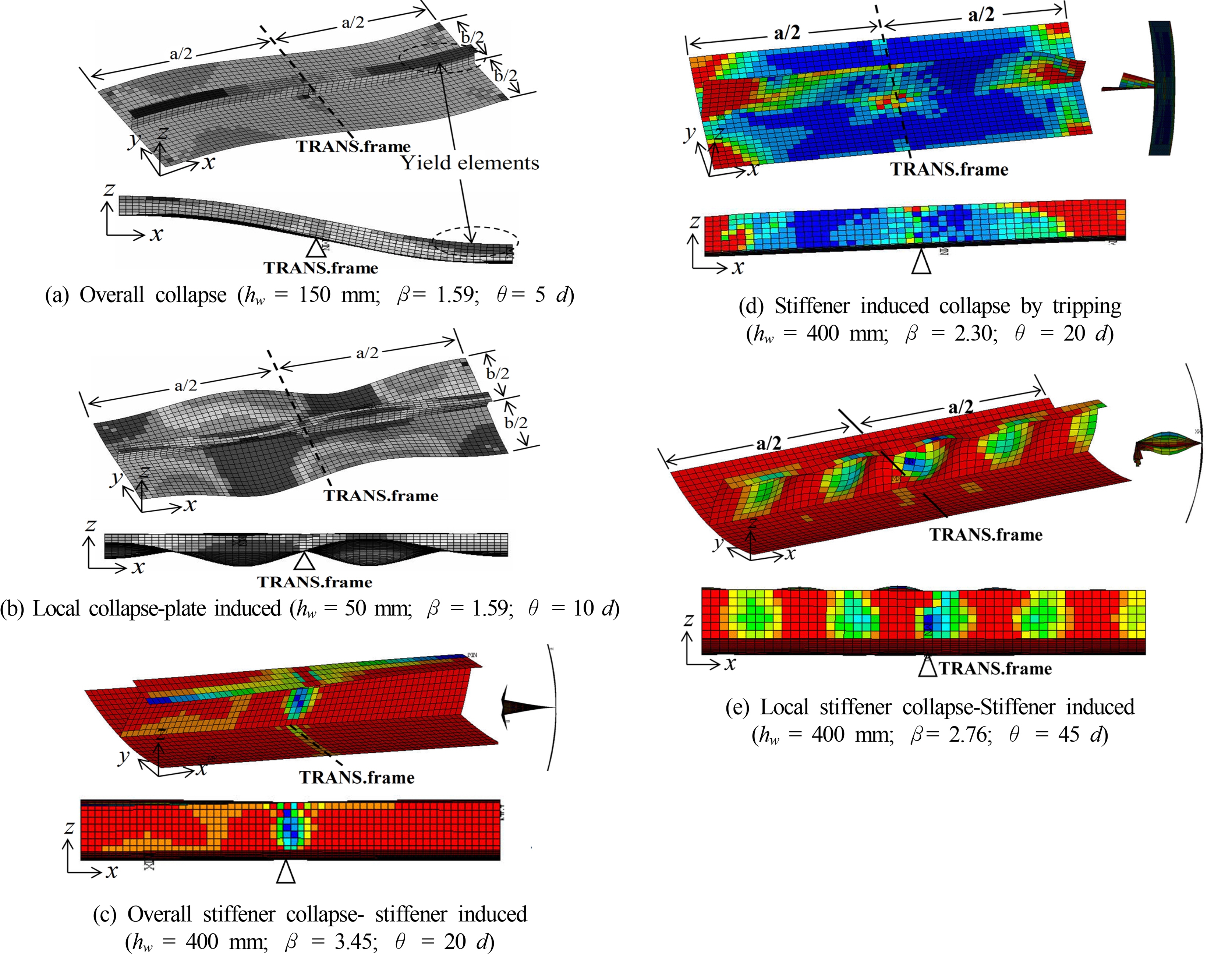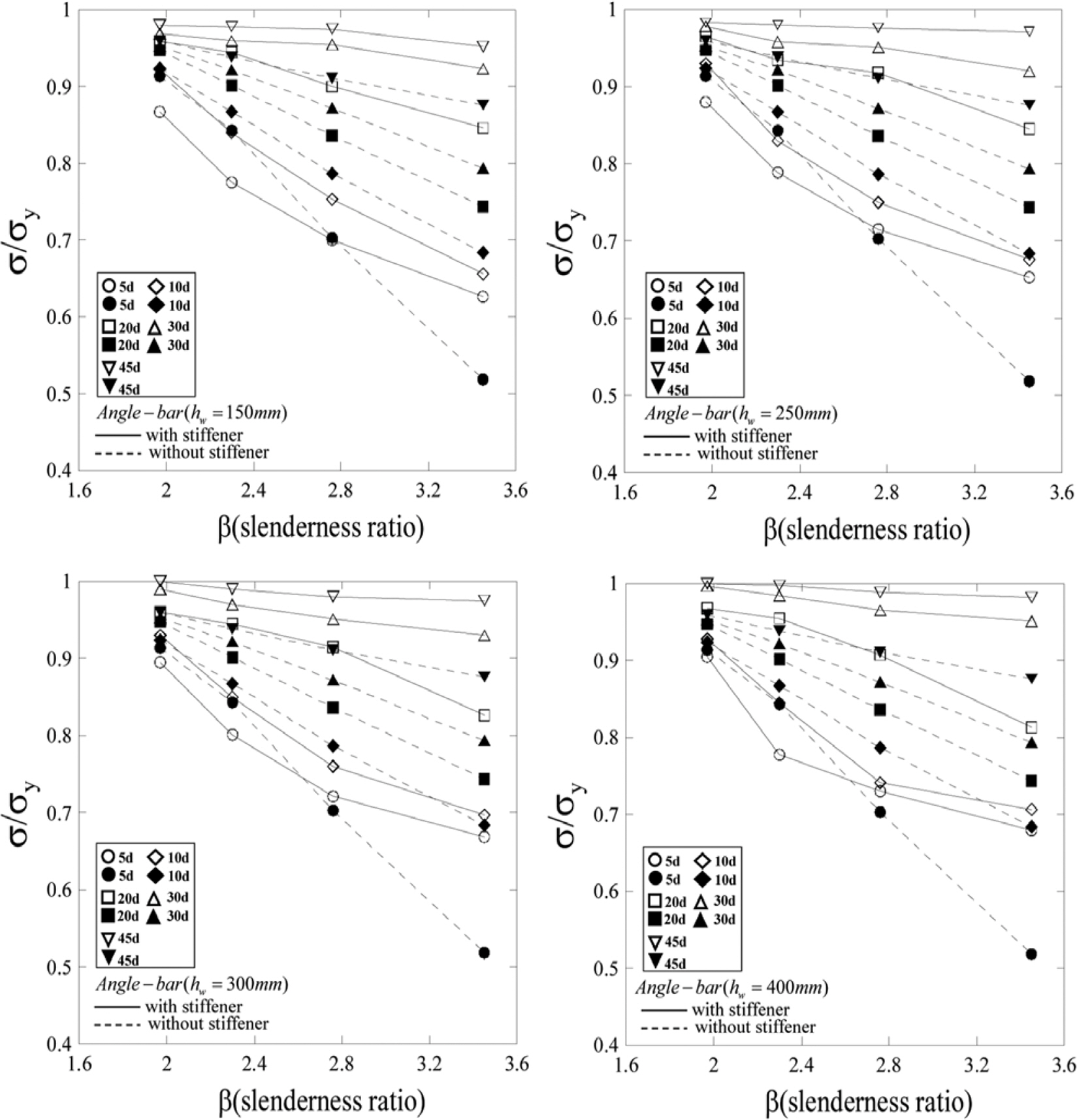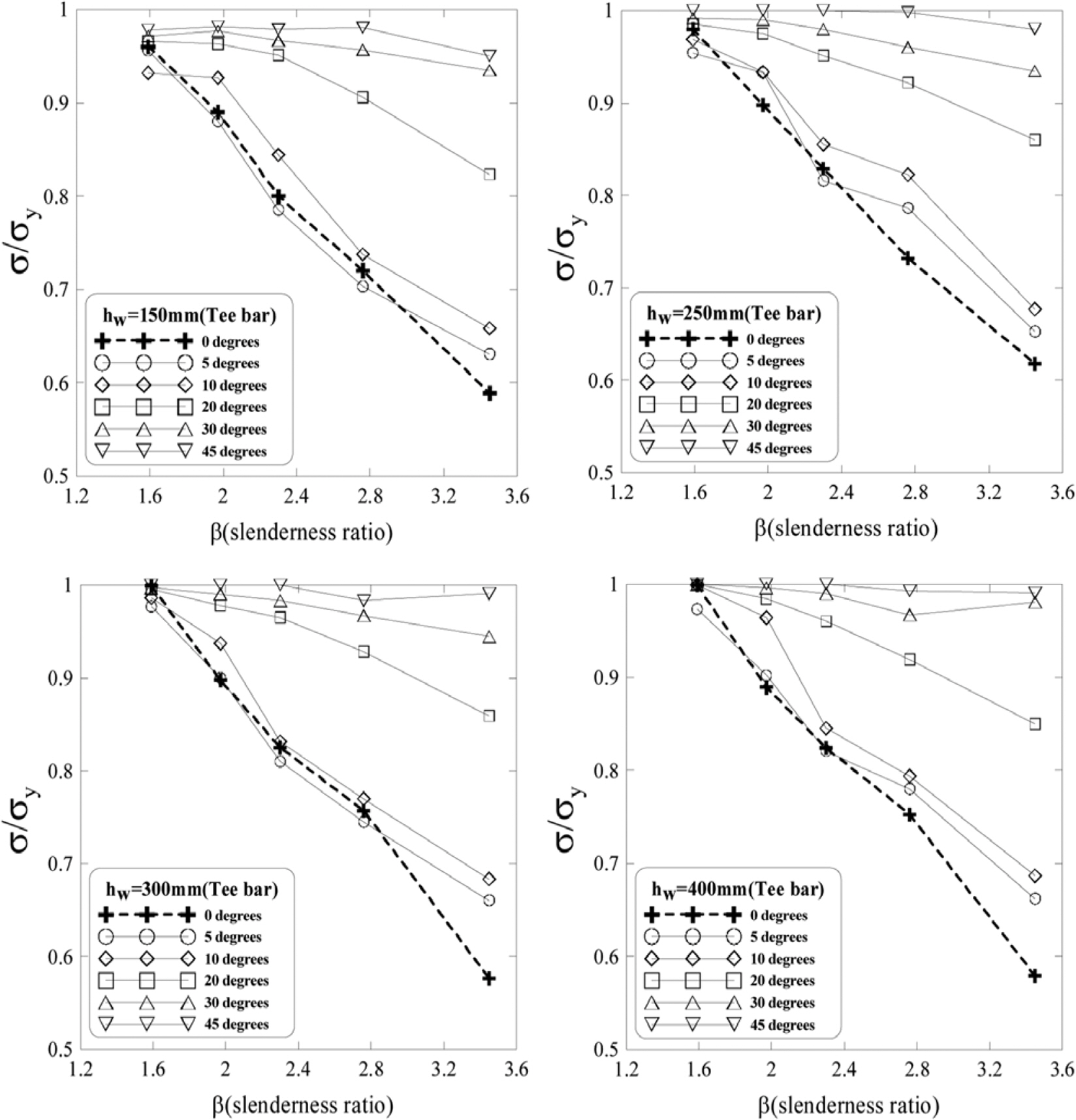1. Introduction
2. Numerical Analysis of Stiffened Curved Plate
2.1 Analysis Model Selection
2.2 Initial imperfection
(3)
(4)
2.3 Eigenvalue Mode
2.4 Elastic Buckling Behaviour
2.5 Elastic / plastic Buckling Behaviour
(A-mode) overall collapse mode: In this mode, a stiffened curved plate with a flat-bar stiffener shows a stiffener collapsing into a column type buckling shape before the local buckling of the curved plate occurs when the stiffener height is low or the flank angle is large. This mode is shown in Fig. 8 (a).
(B-mode) local collapse-plate induced mode: This is a mode in which a curved plate first collapses locally, and the stiffener then collapses according to the curved plate shape; this collapse mode is dominated by plates, as shown in Fig. 8 (b).
(C-mode) overall stiffener collapse-stiffener induced mode: In this mode, a stiffener has a higher rigidity than the plate, and the stiffener is dominant and collapses sideways in a column type collapse shape, as shown in Fig. 8 (c).
(D-mode) stiffener-induced collapse by tripping mode: This is a collapse mode that occurs when there is no flange in the stiffener or when the web height is high, and shows a tripping phenomenon in which the stiffener lies sideways, as shown in Fig. 8 (d).
(T-mode) stiffener induced collapse by web buckling: In this mode, the stiffener has a high web height, the flange has a high rigidity, and the web collapses locally in the form of a plate, as shown in Fig. 8 (e).
3. Ultimate strength collapse mode
4. Conclusion
In general, the increases in the stiffener height and curvature increase the elastic and elasto-plastic buckling strengths of the stiffened curved plate, and in the case of elastic buckling, a complex secondary buckling behavior occurs, whereas in the case of elasto-plastic buckling when considering the material plastic effect, the secondary buckling behavior does not occur. This indicates that, because a stiffened curved plate has a geometrically unstable structure compared to a flat stiffened plate, a design based on elasto-plastic buckling when considering the material nonlinearity is required.
A large series elasto-plastic deflection analysis was conducted to derive the collapse mode characteristics. Based on the analysis results, the collapse mode of the stiffened curved plate was categorized into five modes similar to the collapse mode of a conventional flat stiffened plate: the (A) overall collapse mode, (B) local collapse mode-curved plate induced mode, (C) overall stiffener collapse mode-stiffener induced mode, (D) stiffener collapse mode induced by tripping mode, and (T) stiffener collapse mode induced by a stiffener web buckling. In addition, the effects of the collapse characteristics on the ultimate strengths were analyzed, and the characteristics of the stiffened curved plates derived through this analysis were investigated
The defined stiffened curved plate collapse mode will be used as important information for the development of a theoretical analysis method when considering the respective deflection characteristics of the corresponding collapse characteristics. In the future, this mode can be used as a deflection equation for applying theoretical analysis and numerical methods to each collapse mode derived.
Further study is needed to verify the collapse mode characteristics based on the experimental methods, and a follow-up investigation is needed to develop an equation for predicting the ultimate strength of the stiffened curved plate for each verified collapse mode.



















